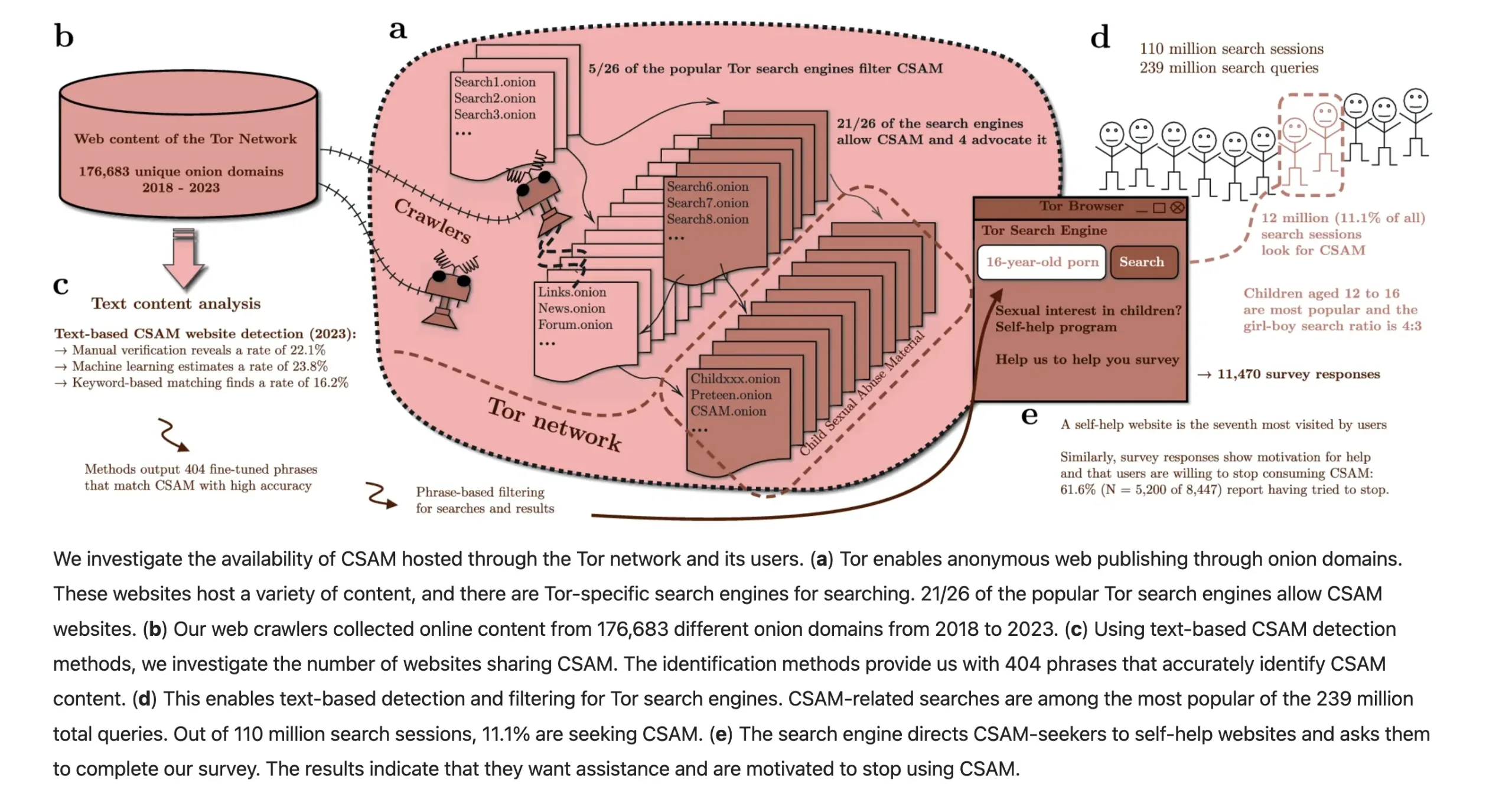
While preparing the SafeHorizon project, partners Spanish National Research Council and Tampere University joined forces to co-author an article, “Investigating child sexual abuse material availability, searches, and users on the anonymous Tor network for a public health intervention strategy”. The article received 340,967 downloads in 2024, placing it as one of the most downloaded scientific articles published in Scientific Reports under Nature Portfolio.
These initial results established targets for our SafeHorizon efforts. Tor is widely used for staying anonymous online and accessing onion websites. While valuable for legal purposes, it is popular for distributing and viewing illicit child sexual abuse material (CSAM). One-fifth of onion websites shared CSAM, and 11% of search sessions on a Tor search engine sought it. Yet, optimistically, the study was able to reach these users and redirect them to mental health resources, and half of the users reported they would like to stop CSAM usage.
The SafeHorizon project continues this work: in 2025, we detected 47,116 onion domains on the Tor anonymity network that disseminate child sexual abuse material and reported these to law enforcement. SafeHorizon is effectively monitoring CSAM distribution on the dark web and clear web, reporting the links to law enforcement, and adding novel techniques to address the problem: taking down the material and redirecting users to mental health resources.
Search sessions on the Tor network search engine reveal the age that users are seeking, and the searches are specifically aimed at children between the ages of 12 and 16. On the other hand, 17-year-olds and adults aged 18–19 are not significantly targeted.

Figure 1 – Approach for analysing CSAM availability and usage on Tor
Written by: Juha Nurmi, Tampere University


